Abstract
Serum from both normal and T cell-deprived female adult CBA mice shows a background titre of antibody to Corynebacterium parvum of about 2–4 log2 units by a latex agglutination test. Intraperitoneal injection of C. parvum causes a marked rise in titre which reaches its peak after about a month, and a second injection at that time evokes a further response. Treatment with mercaptoethanol reduces the background titre, and also the titre 1–3 weeks after immunization by 1–2 log units. Subcutaneous injection of C. parvum on the other hand evokes little or no antibody response.
Both the antitumour effect of C. parvum, and its effect on clearance of colloidal carbon from the blood stream, can occur in the presence of high levels of antibody directed against the organism. Theoretical and possible therapeutic implications of these findings are discussed.
Full text
PDF
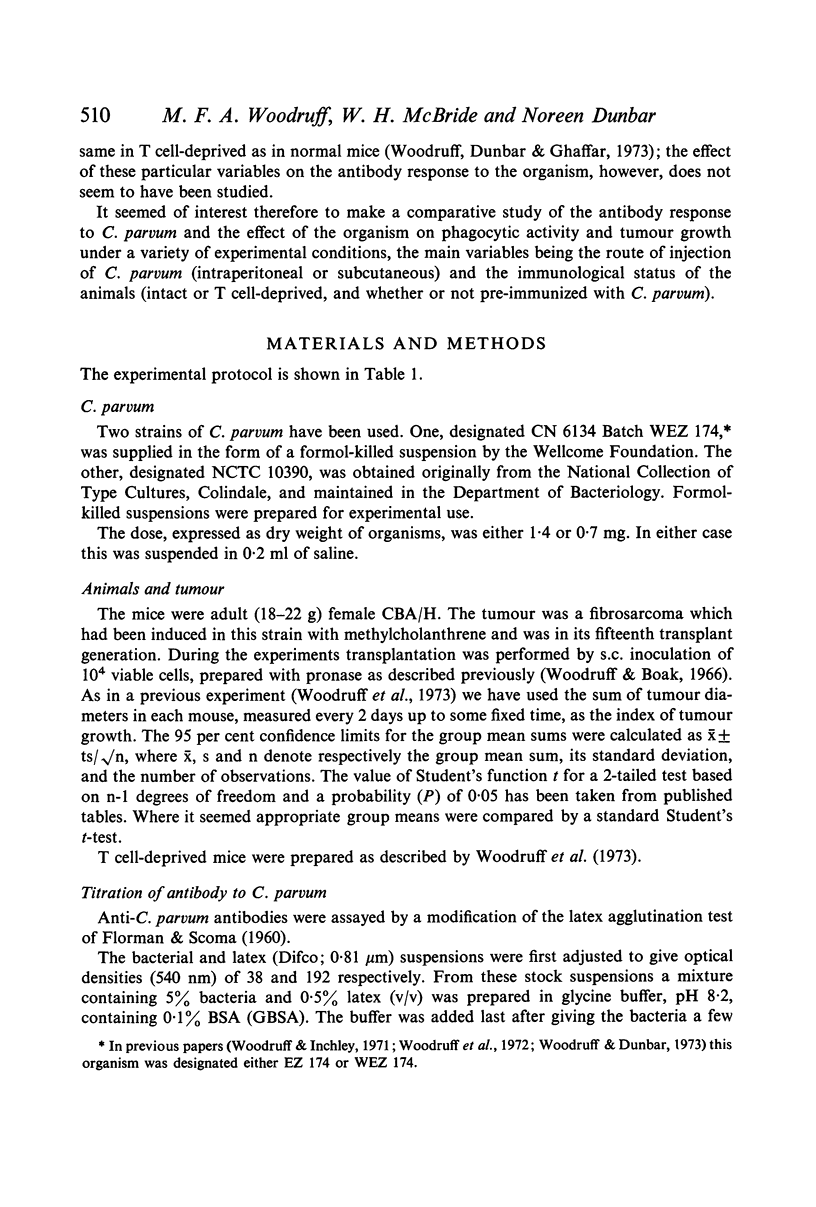
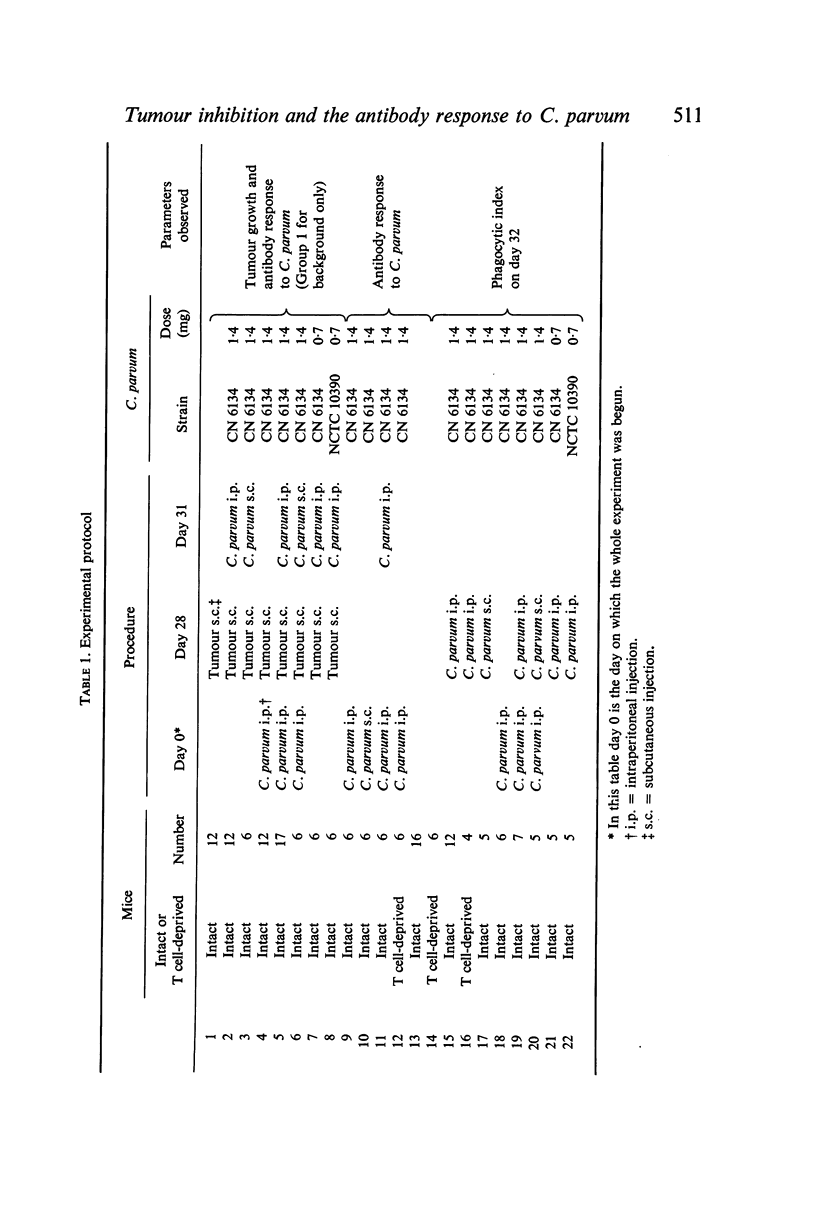
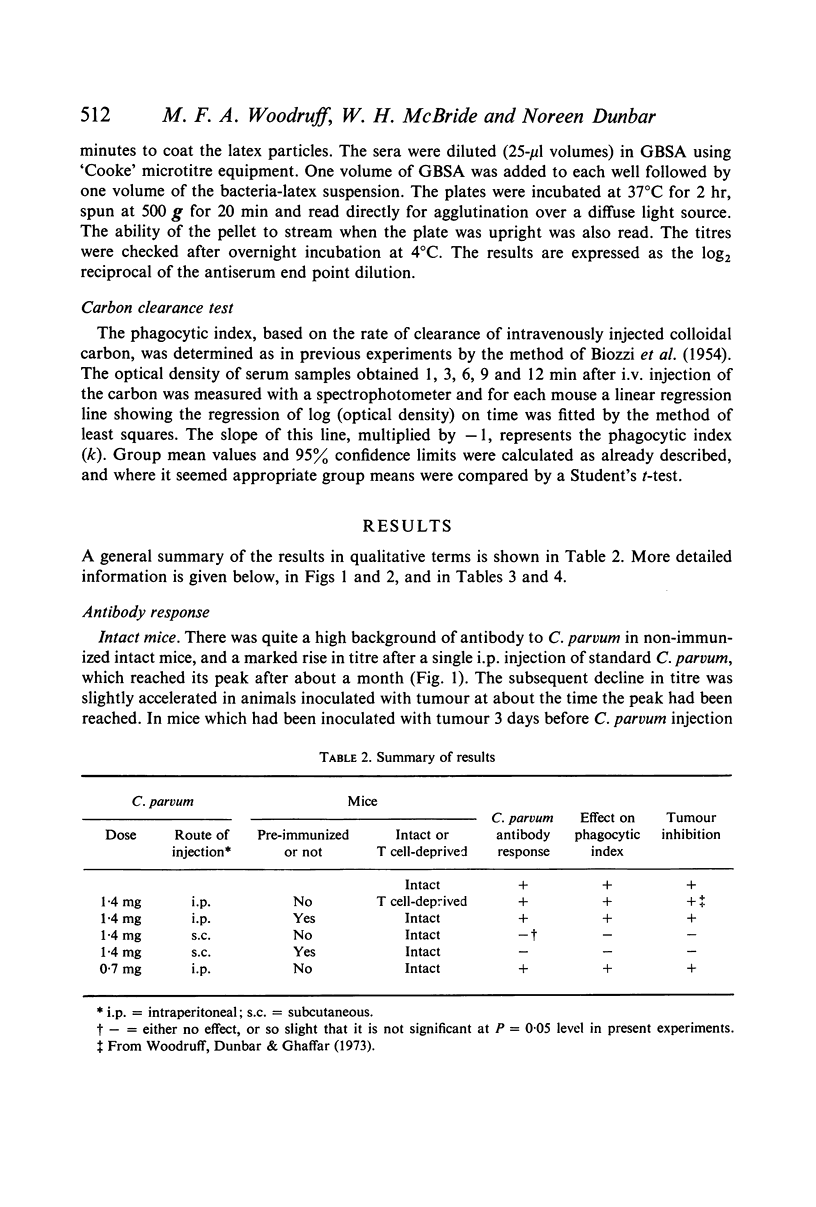
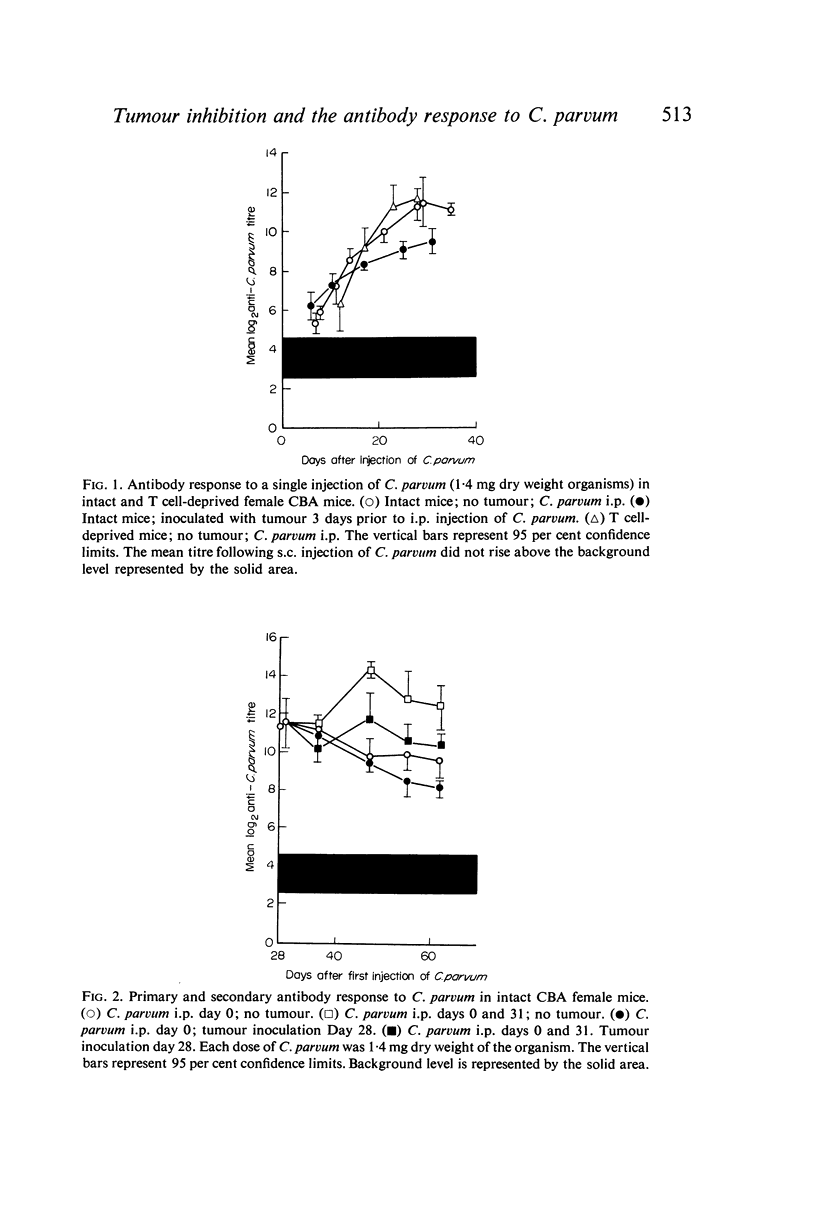
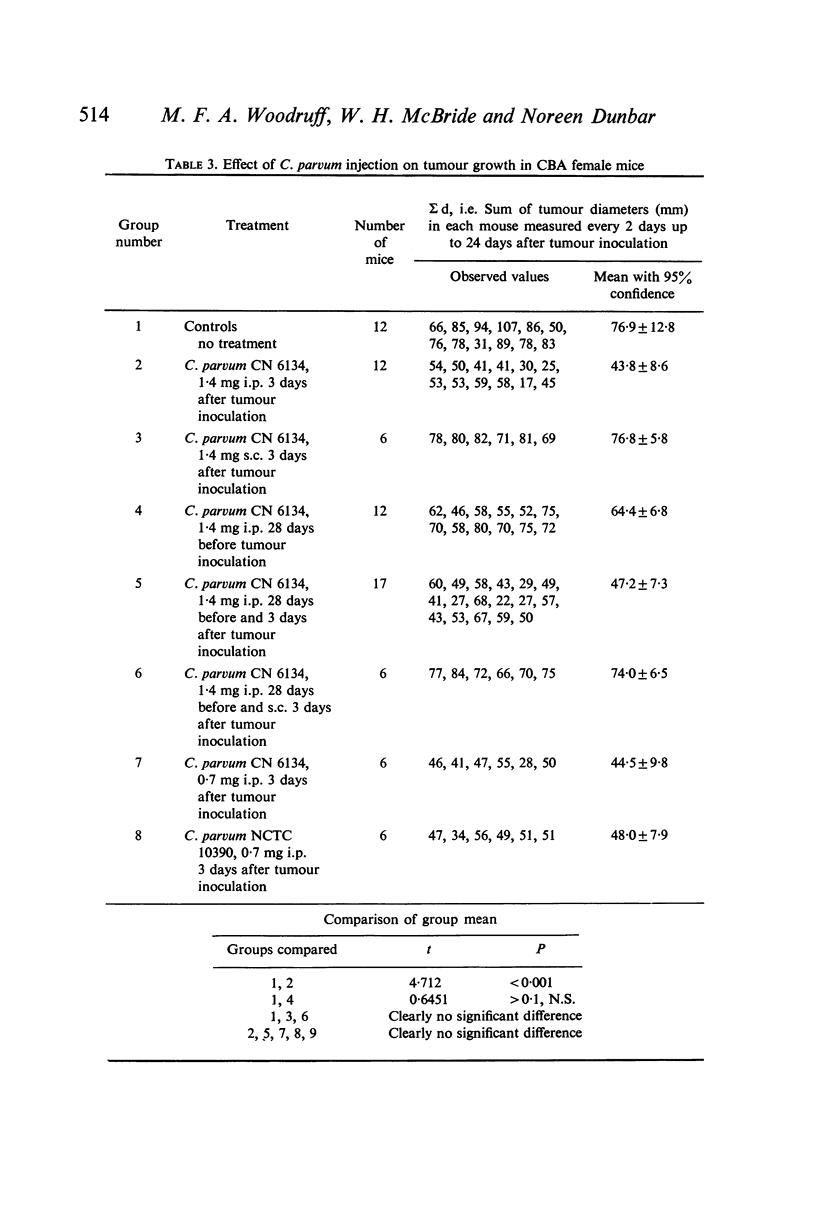

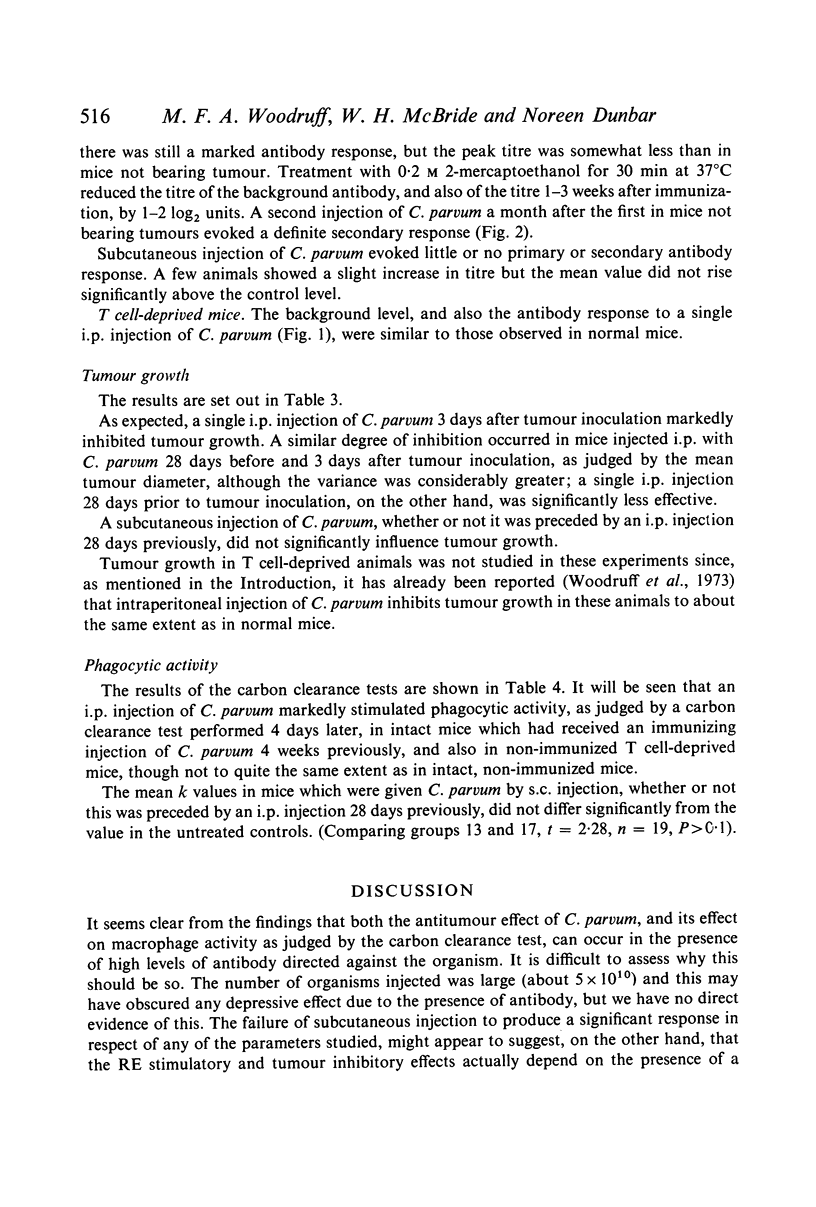
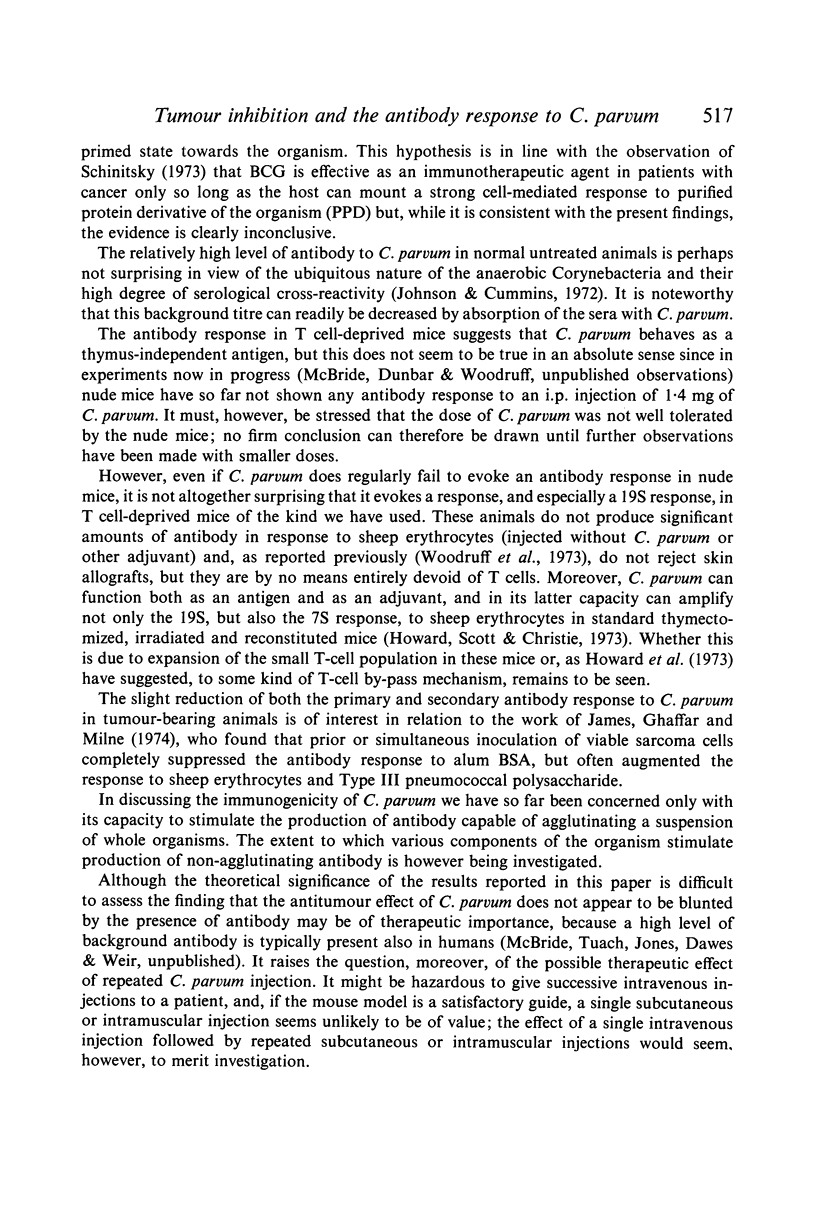

Selected References
These references are in PubMed. This may not be the complete list of references from this article.
- BIOZZI G., BENACERRAF B., STIFFEL C., HALPERN B. N. Etude quantitative de l'activité granulopexique du système réticuloendothéliai chez la souris. C R Seances Soc Biol Fil. 1954 Mar;148(5-6):431–435. [PubMed] [Google Scholar]
- FLORMAN A. L., SCOMA J. L. A latex agglutination test for anaerobic diphtheroids. Proc Soc Exp Biol Med. 1960 Aug-Sep;104:683–685. doi: 10.3181/00379727-104-25951. [DOI] [PubMed] [Google Scholar]
- HALPERN B. N., PREVOT A. R., BIOZZI G., STIFFEL C., MOUTON D., MORARD J. C., BOUTHILLIER Y., DECREUSEFOND C. STIMULATION DE L'ACTIVIT'E PHAGOCYTAIRE DU SYST'EME R'ETICULOENDOTH'ELIAL PROVOQU'EE PAR CORYNEBACTERIUM PARVUM. J Reticuloendothel Soc. 1964 Jan;1:77–96. [PubMed] [Google Scholar]
- Johnson J. L., Cummins C. S. Cell wall composition and deoxyribonucleic acid similarities among the anaerobic coryneforms, classical propionibacteria, and strains of Arachnia propionica. J Bacteriol. 1972 Mar;109(3):1047–1066. doi: 10.1128/jb.109.3.1047-1066.1972. [DOI] [PMC free article] [PubMed] [Google Scholar]
- Schinitsky M. R. Active immunotherapy for cancer. Lancet. 1973 Sep 29;2(7831):737–738. doi: 10.1016/s0140-6736(73)92571-3. [DOI] [PubMed] [Google Scholar]
- Woodruff M. F., Boak J. L. Inhibitory effect of injection of Corynebacterium parvum on the growth of tumour transplants in isogenic hosts. Br J Cancer. 1966 Jun;20(2):345–355. doi: 10.1038/bjc.1966.42. [DOI] [PMC free article] [PubMed] [Google Scholar]
- Woodruff M. F., Inchley M. P., Dunbar N. Further observations on the effect of C. parvum and anti-tumour globulin on syngeneically transplanted mouse tumours. Br J Cancer. 1972 Apr;26(2):67–76. doi: 10.1038/bjc.1972.11. [DOI] [PMC free article] [PubMed] [Google Scholar]
- Woodruff M. F., Inchley M. P. Synergistic inhibition of mammary carcinoma transplants in A-strain mice by antitumour globulin and C. parvum. Br J Cancer. 1971 Sep;25(3):584–593. doi: 10.1038/bjc.1971.74. [DOI] [PMC free article] [PubMed] [Google Scholar]
- Woodruff M., Dunbar N., Ghaffar A. The growth of tumours in T-cell deprived mice and their response to treatment with Corynebacterium parvum. Proc R Soc Lond B Biol Sci. 1973 Aug 31;184(1074):97–102. doi: 10.1098/rspb.1973.0034. [DOI] [PubMed] [Google Scholar]


